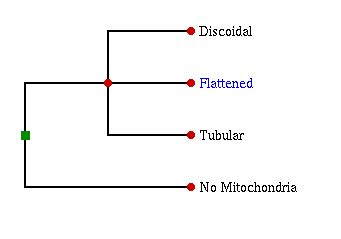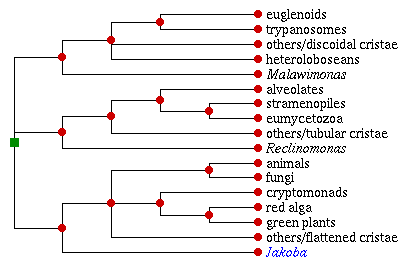Jakoba is a genus of small bacterivorous zooflagellates. The single species, J. libera (Ruinen, 1938) Patterson, 1990, is widespread and possibly common, known from numerous shallow- and deep-water locations in the world's oceans.
Jakoba belongs to an informal protozoan group, the "jakobids", that has many similarities with the amitochondrial retortamonads. Other jakobid genera are Reclinomonas, Histiona, and Malawimonas. Jakoba has more features in common with Reclinomonas and Histiona than with Malawimonas.
The jakobids contain the most eubacterial-like genomes so far observed in mitochondria, and may therefore provide important information on the origin and early evolution of mitochondria in eukaryotic cells.

Postulated global eukaryote phylogeny based on presence or (ancestral) absence of mitochondria, and shape of mitochondrial cristae. Jakoba has been placed in the "flattened" cristae clade (but see below).

Postulated phylogenetic position of Jakoba, inferred from molecular and morphological data (but see comment below). The relative positions of other jakobids (Malawimonas, Reclinomonas), are also shown. Branch lengths are arbitrary and do not reflect phylogenetic distance. "Others" refers to additional, usually poorly known groups in the clade.
Recent work suggests that Jakoba is more properly placed together with Reclinomonas in a single clade; the "flattened cristae" and "tubular cristae" clades may arise from the same basal node as Jakoba and Reclinomonas.
Return to summary information